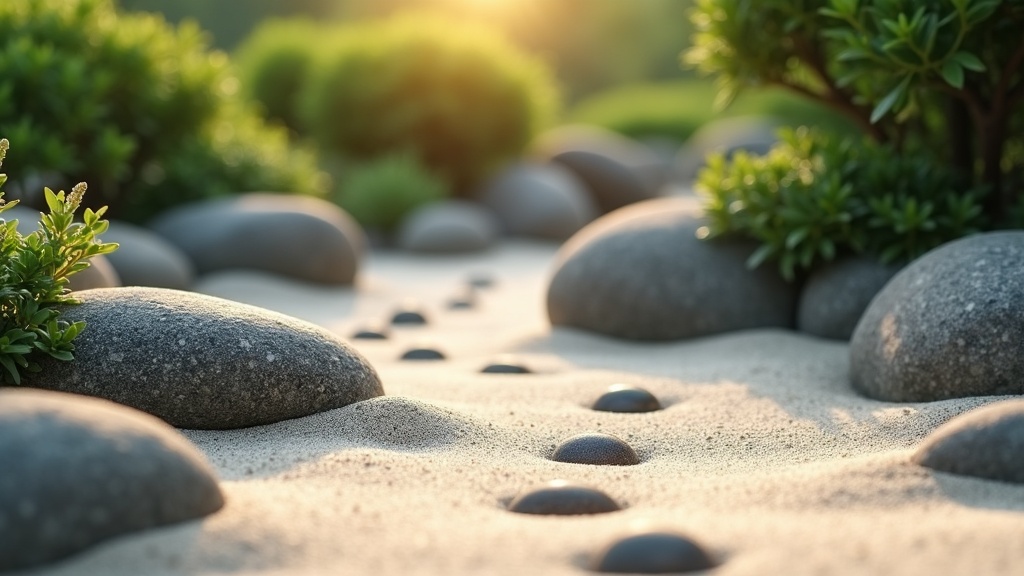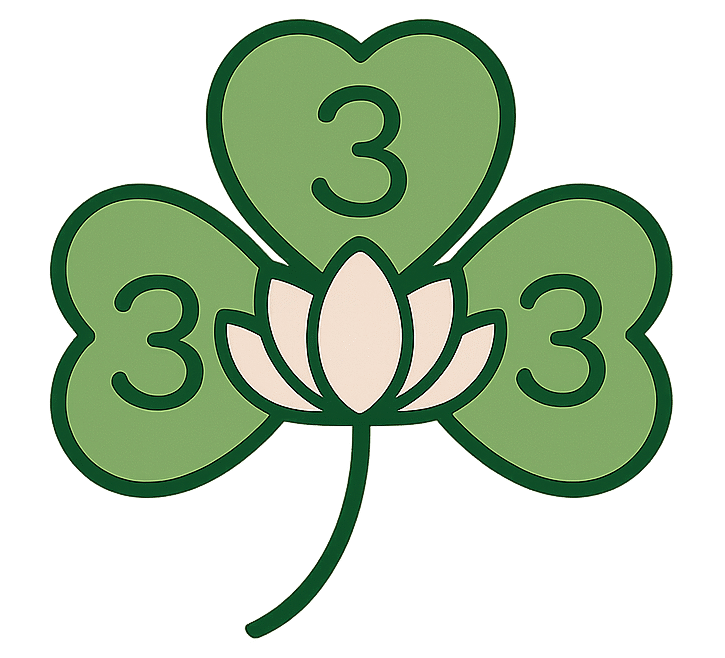 Stress sneaks up at the weirdest times, and even little worries can really take over if you don’t do something about them. I’ve found that learning a handful of reliable relaxation techniques makes a real difference, especially when life feels a bit too busy. The good news is, anyone can learn simple ways to relax that fit right into daily life.
Stress sneaks up at the weirdest times, and even little worries can really take over if you don’t do something about them. I’ve found that learning a handful of reliable relaxation techniques makes a real difference, especially when life feels a bit too busy. The good news is, anyone can learn simple ways to relax that fit right into daily life.
I’m always surprised at how much calmer I feel with just a few easy tweaks to my routine, like a slow, deep breath or a short walk. Whether you want to chill out after work or need to handle nerves before a big meeting, there are lots of options to try. These techniques aren’t complicated, and you can start using them right away.
This guide covers some of my go-to relaxation tips. I’ll walk you through how they work, why they help, and how to get started quickly—even if you’re new to all of this. If your stress levels could use a little help, these ideas are definitely worth checking out. Let’s jump into these everyday relaxation techniques that can truly make a difference in your well-being.
Step 1: Understand What Relaxation Looks Like for You
Everyone has a different idea of what being relaxed feels like. For some, it’s a totally quiet mind; for others, it’s just feeling less tense or wound up. Figuring out exactly what “relaxed” means for you sets a helpful baseline, and makes it easier to spot which techniques really work. When you pay attention to what true relaxation feels like, you’ll be able to track down which methods provide that effect and stick with them as part of your routine.
Questions to Consider:
- When was the last time you felt truly relaxed?
- What activities help you unwind, even a little?
- Are you looking to relax your mind, your body, or both?
- How does stress show up for you? Do you get tight shoulders, racing thoughts, or have a hard time staying focused?
Common Relaxation Goals:
- Ease muscle tension and feel more comfortable physically.
- Slow down busy thoughts or anxious feelings.
- Feel more present in the moment (not just on autopilot).
- Sleep better at night.
Once you have a better idea of how you want to feel, it’s easier to pick the right techniques and notice your progress. Taking even a few minutes to check in with yourself can make a difference before you try out the suggestions that follow.
Step 2: Start with Breath Based Relaxation
One of the simplest ways to unwind is to pay attention to your breathing. Basic deep breathing exercises work almost anywhere, and you don’t need any special gear. I find this especially handy if I’m feeling anxious or jittery and want to calm down fast.
How to Try Deep Breathing:
- Sit comfortably and close your eyes if that feels okay.
- Breathe in slowly through your nose for a count of four.
- Hold your breath for a count of four.
- Breathe out slowly through your mouth for a count of six or eight.
- Repeat for a few minutes, focusing on the sound and feeling of your breath.
Tips:
- Try breathing into your belly instead of just your chest. It feels way more relaxing.
- If you lose your place, just start again. No need to be perfect.
- If you want to give this technique a boost, pair your breathing with soft music or dimmed lights for an even greater calming effect.
With a little practice, deep breathing can become a go-to tool whenever you need to reset during the day. Many people track down that it’s helpful both at home and at work.
Step 3: Get Comfortable with Progressive Muscle Relaxation
Progressive muscle relaxation (PMR) helps release tension you might not even know you’re holding. I use PMR on days when my back or jaw feels extra tight or when I just need a break from staring at my screen. PMR is a super detailed relaxation technique that asks you to tense and then let go of muscle groups throughout your body, helping you get a sense of where you’re holding stress and letting it go bit by bit.
How PMR Works:
- Find a quiet spot to sit or lie down.
- Start at your toes. Tense the muscles as tightly as you can for 4–5 seconds, then relax them completely.
- Move up your body (feet, legs, stomach, hands, arms, shoulders, neck, face)—tense and then relax each area.
- Notice the difference between tension and relaxation with each muscle group.
By the end, I usually feel much looser and less anxious. This technique works wonders before bedtime if you’re having trouble falling asleep. Some people even add soft stretching or gentle music to make the process more pleasant. Regular use can help you spot tension earlier and work it out before it builds up.
Step 4: Make Mindfulness Part of Your Routine
Mindfulness is just about paying attention to the present moment instead of letting your thoughts run wild. It sounds basic, but it really gives a boost to your relaxation. I’ve gotten into the habit of using mindfulness when I’m washing dishes or even standing in line somewhere boring. It’s easier than you’d think once you practice a bit, and after a while, your mind naturally gets into that chill, focused mode.
Easy Mindfulness Exercises:
- Focus on the feeling of your breath moving in and out.
- Notice the sensations in your hands or feet.
- Listen closely to sounds around you without judging them as good or bad.
- Pay attention to scents, sights, or textures as you move through your day.
Spending just five minutes being mindful can really tone down stress from a busy day. The trick is to work it in consistently, not just when you’re frazzled. Eventually, your attention will be sharper, and you’ll find it easier to snap yourself out of worry spirals.
Step 5: Limit Distractions for Deeper Relaxation
It’s tough to relax when notifications are flying in and your mind is all over the place. Cutting out distractions for even a short stretch can make a big difference. I like to pick one activity each day, like reading, meditating, or working on a hobby, and give it my full attention with no phone allowed.
How to Reduce Distractions:
- Put your phone on airplane mode while relaxing.
- Let family or roommates know you need a few minutes of quiet.
- Turn off background TV or podcasts since silence can be surprisingly soothing.
- Try noise cancelling headphones if your environment is loud.
A little bit of focus helps your mind settle, and it makes any relaxation technique you pick work even better. Over time, you’ll start to crave these quiet moments and seek them out naturally.
Step 6: Create a Relaxing Environment
Your surroundings have a big impact on how easy it is to chill out. I notice I relax faster in tidy, calm spaces with soft lighting and gentle background sounds. Small changes like adding a plant or keeping your workspace clear can make a space more relaxing without any major effort.
Tips for a Calming Space:
- Dim the lights or use warm lamps in the evening.
- Use calming scents (like lavender or chamomile) with a diffuser or spray.
- Keep clutter to a minimum in your main relaxation zone.
- Add elements from nature, such as plants, pebbles, or a small water feature.
- Choose music with soft, slow rhythms if silence feels uncomfortable.
Tweaking your environment doesn’t take much time but really pays off when you’re trying to unwind after a long day. Even something as simple as opening a window for fresh air can step up your ability to relax.
Step 7: Stick with What Works (and Stay Flexible)
Building a relaxation habit takes practice. Some techniques might not click right away, and that’s totally normal. I’ve found the best results come from mixing things up until I find what works, then making time for those techniques most days—even when I feel busy.
Staying Consistent:
- Experiment with different techniques and notice which ones help the most.
- Add short relaxation breaks to your daily schedule.
- Don’t be hard on yourself if you skip a day; just start again the next chance you get.
- Adjust your approach if your needs or routine change, like during stressful times at work or school.
The more you use these techniques, the more natural they become. Over time, you might notice you’re able to relax more deeply and stay calm, even when life gets weird. Flexibility is key—your go-to technique today might change in the future, and that’s perfectly fine.
Common Questions & Quick Fixes
What if I can’t shut my mind off?
- Try focusing on your breathing or counting your exhales.
- If your mind wanders, gently bring your attention back; no guilt necessary.
- Some people find background music or white noise helps prevent racing thoughts.
I don’t have much free time. What can I do?
Even two minutes is enough for a quick breathing exercise or a mindful pause. You don’t need a big chunk of time to benefit; just use short windows when you can. Even during your commute or lunch break, you can squeeze in a little relaxation.
I feel silly doing these exercises. Any advice?
- Start in private if that helps you feel more comfortable.
- Remind yourself that these techniques are for your own benefit, not for anyone else.
- The more you practice, the more normal it feels and the more likely you’ll keep at it.
Next Steps: Making Relaxation an Everyday Thing
Getting into the habit of relaxing consciously takes a bit of trial and error, but it really adds up. I suggest picking just one new technique to try today and seeing how it feels. If it clicks, keep going; if not, try another option from the list above.
Your Actionable Checklist:
- Pick one relaxation technique to try this week.
- Decide when and where you’ll practice it (set a reminder if needed).
- Notice any changes in how you feel, even if they’re subtle.
Relaxation isn’t all or nothing. Even a few minutes of focused unwinding helps your mind and body reset. What relaxation technique will you try out today? Over time, you’ll notice stress feels more manageable, and you’ll have a solid set of tools to rely on whenever you need a break. Give yourself permission to step away, breathe, and find calm each day—it really does make a difference over the long haul.
